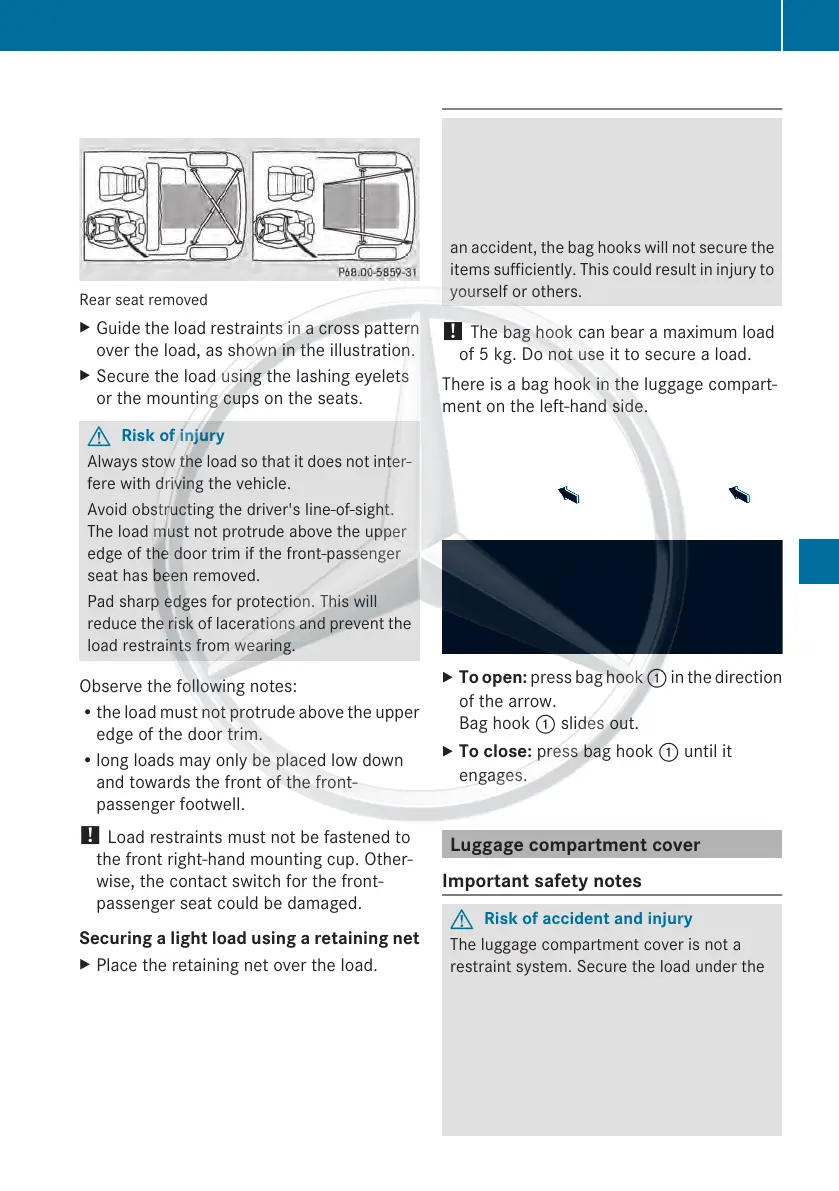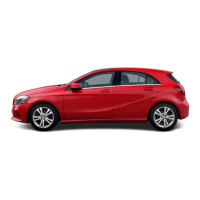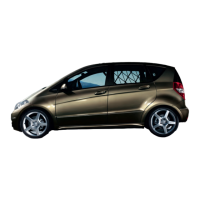Securing aload when the seats have been
removed
Rear seat removed
X
Guide the load restraints in a cross pattern
over the load, as shown in the illustration.
X
Secure the load using the lashing eyelets
or the mounting cups on the seats.
G
Risk of injury
Always stow the load so that it does not inter-
fere with driving the vehicle.
Avoid obstructing the driver's line-of-sight.
The load must not protrude above the upper
edge of the door trim if the front-passenger
seat has been removed.
Pad sharp edges for protection.This will
reduce the risk of lacerations and prevent the
load restraints from wearing.
Observe the following notes:
R
the load must not protrude above the upper
edge of the door trim.
R
long loads may only be placed low down
and towards the front of the front-
passenger footwell.
!
Load restraints must not be fastened to
the front right-hand mounting cup. Other-
wise, the contact switch for the front-
passenger seat could be damaged.
Securing alight load using aretaining net
X
Place the retaining net over the load.
X
Engage the retaining net hooks in the lash-
ing eyelets.
Bag hook
G
Risk of injury
Only hang light loads on the bag holders. Do
not use them to transport heavy, sharp-edged
or fragile objects. When braking sharply,
changing direction quickly or in the event of
an accident, the bag hooks will not secure the
items sufficiently. This could result in injury to
yourself or others.
!
The bag hook can bear a maximum load
of 5 kg. Do not use it to secure a load.
There is a bag hook in theluggage compart-
mentonthe left-hand side.
X
To open: press bag hook : in the direction
of the arrow.
Bag hook : slides out.
X
To close: press bag hook : until it
engages.
Luggage compartment cover
Important safety notes
G
Risk of accident and injury
The luggage compartmentcover is not a
restraint system. Secure the load under the
luggage compartment cover by suitable
means. Make sure that the luggage compart-
ment cover is engaged securely. If luggage is
not sufficiently secured, it can be thrown over
the backrest into the passenger compart-
ment, for instance during heavy braking, sud-
den changes of direction or in the event of an
Stowage areas
199
Stowing and features
Z

